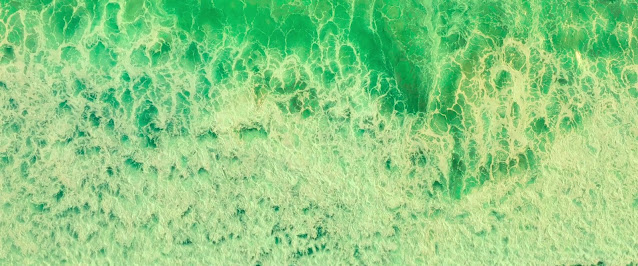Steppenwolf (Adilkhan Yerzhanov, 2024 / 2025)
Not a film about the Rock band.
Like many out there, my ignorant knowledge of the former Soviet republic of Kazakhstan came from comedian Sacha Baron Coen's character Borat. Therefore, when Adilkhan Yerzhanov's nihilistic and violent post-western Steppenwolf (2024 / 2025) blipped its way onto my radar, I was more than just a little bit intrigued by it. Turns out Yerzhanov's film has its own sense of humour; one that is both dark and deadpan, peppered here and there amongst a brutal dystopian world.
The plot involves Tamara (Anna Starchenko), a woman with a stammer, looking for her missing son, Tamika. Her search leads to her nonchalantly walking into a violent gun battle between rural lawmen and rebels in a remote police precinct. During the bullet-ridden massacre, Tamara meets Brajyuk (Berik Aitzhanov), a police interrogator / torturer who agrees to help her for a price. The pair share a common objective, as the person linked to Tamika's abduction is also someone that Brajyuk has a personal vendetta with.


There's an interesting dynamic between the pair of protagonists. They're an obvious odd couple. Tamara comes across as an angelic like entity in Yerzhanov's hellscape. She's introduced with a religious painting falling from her wall while praying. Her son immediately goes missing after this scene. Tamara's timid and introverted disposition is starkly contrasted with the rough and coarse world she inhabits. An assault rife fails on multiple attempts when fired at her. Brajyuk, on the other hand, is almost the devil incarnate on occasions; an individual who appears stoic initially, but breaks out into childish dances at times. He is a cold-blooded killer, with almost no sense of honour. Brajyuk goes beyond the boundaries of conventional anti-hero territory to complete villain on occasions. Yet, their relationship is what makes this hellish road movie such compelling viewing. At the heart of this nihilistic and misanthropic film, is a quest for some semblance of humanity.
Particularly fond of the scene where Tamara musters the strength to cobble more than a few words together imploring for Brajyuk's help: "We need to find Timka, save him. He won't survive without me. They'll kill him. No one needs him. No one needs me. There's no good. I know it. I knew it all along. But it is necessary. Good is necessary. Please help. You're kind. Please help. Please...You're a kind person. Please help. We need to save Timka. You're kind. Aren't you? You are kind. Please help find Timka. Please." As the camera horizontally pans away from Tamara, it fixes on the contemplative Brajyuk. Her words seem to affect him. Alas, his response mockingly imitating her and laughing. And yet, for a split second, it's almost as if a shred of good was still lurking somewhere within his soul. Both actors' performances are exceptional.


The Kazakh Steppe is a striking location in this film. The arid region lends itself well to its dystopian setting. Along with Steppenwolf being shot in 2.39:1 aspect ratio, Yerkinbek Ptyraliyev's cinematography evokes classic westerns of the past. Those glorious widescreen shots of the natural vistas is inherent here. The morning mist over the grassy plains looks stunningly mystical.
Furthermore, some scenes take obvious inspiration from the western genre; notably, the iconic doorway scene of John Wayne walking away in John Ford's The Searchers (1956). That scene is referenced multiple times in Steppenwolf; even bookending the film. European westerns also wield their aesthetic influence on the film; particularly the framing and composition of Sergio Leone's westerns. Steppenwolf's handling of violence and male machismo is definitely evocative of Sam Peckinpah's work.
Bizarrely, Steppenwolf's soundtrack consists of effervescent sounding synthpop. Mixed feelings about this. Given the oppressive tone of the film and the gravitas of their shared task, I'm not sure this was the right choice. If anything, I got the impression Yerzhanov thought, "It worked with the couple in Nicholas Winding Refn's Drive (2011), why not try it here?"
George Miller's Mad Max films are the most obvious influences, however. Given its desolate and cruel setting, you would be forgiven into thinking Steppenwolf's characters exist in a post-apocalypse. Life is cheap and dispensable. The morally bankrupt appear to reap the most chance of surviving in this world. If that's not enough, Brajyuk leather jacket is missing sleeve; an obvious reference to Max's wardrobe in Mad Max 2 (1981).


However, Steppenwolf does have some its faults. Its writing isn't quite up to par with the stunning visuals and palpable atmosphere. In fact, it becomes quite lacking in the final act of the film and relies heavily on its dystopian vibe and cool visuals; hence the pacing takes a hit and crawls to a much slower pace than what ought to be necessary. Character developments also kind of take a back seat. Thus, this section of the film is less Max Rockatansky and more Max Rockatarkovsky. Take for instance a scene involving Brajyuk meeting with his estranged father. Little is known of their past relationship, hence the resolution between the pair comes across as hollow and forgettable. The climactic battle with the regional gang boss / warlord feels rushed and anticlimactic. The old adage of the journey being more important than destination being taken far too literally by Yerzhanov. More importantly, without venturing into spoiler territory, the final scene between Tamara and Brajyuk is one that is both unsatisfying and bathetic.
Despite these issues, Steppenwolf is still a very good film, overall. One that I'm looking forward to revisiting again; possibly before the year is out. The type of late night genre mashup where you're not sure whether you actually watched it, or dreamt it. A tough, brutal and violent piece of cinema, yet still a beautiful and mesmerising viewing experience. Can definitely envision this becoming a modern cult film over the next few years.

















